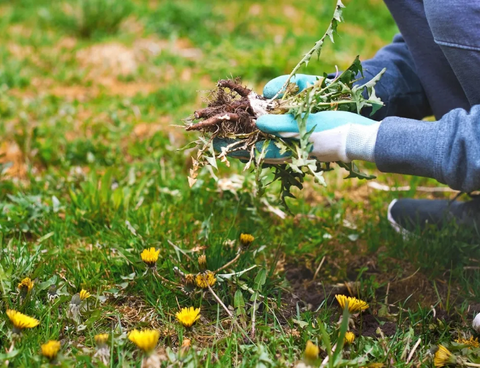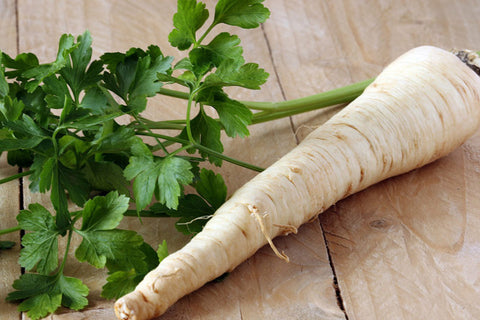Introduction
As the gentle warmth of spring permeates the air and nature awakens from its winter slumber, April heralds the beginning of a new gardening season. With the earth bursting with life and potential, it's time to roll up your sleeves and dive into your garden with gusto. This comprehensive April gardening checklist will guide you through essential tasks to ensure a thriving and bountiful garden throughout the season.

Soil Preparation
Soil testing
Before you embark on your gardening endeavors, take the time to assess the health of your soil. Conduct a soil test to determine pH levels, nutrient deficiencies, and soil composition, providing valuable insights into how to best care for your plants.
Amending soil
Armed with the results of your soil test, amend your soil as needed to optimize its fertility and structure. Incorporate organic matter such as compost, aged manure, or leaf mulch to improve soil texture and nutrient content, laying the foundation for healthy plant growth.
Mulching
Apply a layer of mulch to your garden beds to conserve moisture, suppress weed growth, and regulate soil temperature. Choose from a variety of mulch materials, such as straw, wood chips, or shredded leaves, and spread evenly around your plants to provide a protective blanket for their roots.
Planting
Vegetables
April offers an ideal window for planting a variety of vegetables, from cool-season crops like lettuce, spinach, and peas to warm-season favorites such as tomatoes, peppers, and squash. Check your local frost dates and plant accordingly, ensuring that tender seedlings are protected from unexpected late frosts.
Herbs
Fill your herb garden with an assortment of aromatic herbs that thrive in the springtime. Plant culinary classics like basil, parsley, and chives, as well as medicinal herbs such as lavender, chamomile, and lemon balm, to add flavor and fragrance to your culinary creations.
Flowers
Infuse your garden with a riot of color by planting a variety of spring-blooming flowers. Choose from perennials like tulips, daffodils, and crocuses, as well as annuals such as pansies, violas, and snapdragons, to create vibrant displays that brighten your landscape.
Trees and shrubs
April is an opportune time to plant trees and shrubs, allowing them to establish their roots before the heat of summer sets in. Select native species suited to your climate and soil conditions, and provide ample water and protection from wind and pests as they acclimate to their new surroundings.

Maintenance
Watering
Keep a close eye on soil moisture levels and water your plants as needed to ensure they receive adequate hydration. Water deeply and infrequently to encourage deep root growth and drought tolerance, and avoid overhead watering to prevent fungal diseases.
Fertilizing
Provide a boost of nutrients to your plants with a well-balanced fertilizer to promote healthy growth and abundant blooms. Choose organic options like compost tea, fish emulsion, or seaweed extract to nourish your plants without harmful chemicals.
Pruning
Prune dead or damaged branches from trees and shrubs to promote new growth and maintain their shape and vigor. Deadhead spent flowers from annuals and perennials to prolong blooming and encourage repeat flowering throughout the season.
Pest and disease control
Stay vigilant for signs of pests and diseases in your garden and take prompt action to mitigate their impact. Practice integrated pest management techniques such as handpicking pests, using organic insecticides, and fostering habitat for beneficial predators to keep pest populations in check.
Harvesting
Early spring crops
Enjoy the fruits of your labor by harvesting early spring crops such as lettuce, radishes, and kale for fresh salads and nutritious meals. Harvest promptly to ensure peak flavor and quality, and share your bounty with friends and family to spread the joy of gardening.
Perennials
Gather bouquets of spring-blooming perennials like lilacs, peonies, and bleeding hearts to brighten your home with their beauty and fragrance. Clip stems in the early morning or late evening when they are fully hydrated, and place them in a vase of water to prolong their freshness.
Foraging for wild edibles
Venture into the great outdoors and forage for wild edibles like ramps, fiddlehead ferns, and morel mushrooms that abound in the springtime. Exercise caution and respect for nature as you gather these treasures, and consult a reliable field guide to ensure safe identification.
Garden Cleanup
Removing winter debris
Clear away debris and dead vegetation from your garden beds to make way for new growth and prevent the spread of pests and diseases. Rake up fallen leaves, prune dead branches, and dispose of any plant material that may harbor overwintering pests or pathogens.
Weed control
Stay ahead of weed growth by diligently pulling or hoeing weeds as soon as they appear in your garden. Mulch garden beds to suppress weed growth and smother existing weeds, and consider using organic weed killers or flame weeders for stubborn or large-scale infestations.
Dividing and transplanting
Take advantage of the cool, moist conditions of spring to divide and transplant perennial plants in your garden. Divide overcrowded clumps of perennials like hostas, irises, and daylilies to rejuvenate them and create new plants to share or expand your garden.

Planning and Preparation
Creating a planting schedule
Map out a planting schedule for your garden, taking into account the specific needs and preferences of each plant. Consider factors such as frost dates, plant spacing, and succession planting to maximize yield and minimize competition among crops.
Ordering seeds and plants
Browse seed catalogs and online nurseries to select seeds and plants for your garden, and place orders early to ensure availability. Choose high-quality seeds and healthy plants suited to your growing conditions, and consider trying new varieties to expand your gardening horizons.
Planning garden layouts and designs
Sketch out garden layouts and designs to make the most of your outdoor space and create visually appealing landscapes. Experiment with different planting arrangements, color schemes, and focal points to design a garden that reflects your personal style and meets your practical needs.
Special Considerations
Frost protection
Keep a watchful eye on weather forecasts and be prepared to protect tender plants from late frosts or unexpected cold snaps. Cover sensitive plants with cloches, row covers, or frost blankets, and provide additional insulation with mulch or straw if temperatures plummet.
Companion planting
Harness the power of companion planting to enhance plant health and productivity in your garden. Pair compatible plants that benefit each other through nutrient sharing, pest deterrence, or pollinator attraction, and experiment with different combinations to find what works best for your garden.
Pollinator-friendly gardening practices
Create a welcoming habitat for pollinators such as bees, butterflies, and hummingbirds by incorporating pollinator-friendly plants into your garden. Choose nectar-rich flowers, provide water sources, and minimize pesticide use to support these essential creatures and ensure the pollination of your crops.

Sustainable Gardening Practices
Composting
Embrace the principles of recycling and sustainability by composting kitchen scraps, yard waste, and other organic materials to create nutrient-rich compost for your garden. Build or purchase a compost bin, layer organic materials, and turn the pile regularly to accelerate decomposition and produce black gold for your plants.
Water conservation
Conserve water in your garden by implementing water-saving techniques such as drip irrigation, rainwater harvesting, and mulching. Use water-efficient plants, group plants with similar water needs together, and water early in the morning or late in the evening to minimize evaporation and waste.
Organic gardening methods
Embrace the ethos of organic gardening by eschewing synthetic chemicals and nurturing a thriving ecosystem in your garden. Practice crop rotation, companion planting, and soil building to promote soil health and resilience, and enlist the help of beneficial insects and microbes to maintain a natural balance.
Conclusion
As you embark on your April gardening adventures, remember that gardening is a journey of discovery, growth, and renewal. Embrace the joys and challenges of the gardening process, and let the rhythm of the seasons guide your efforts as you cultivate beauty, abundance, and sustainability in your outdoor oasis. With this comprehensive April gardening checklist as your guide, you'll be well-equipped to nurture your garden and watch it flourish throughout the season and beyond. Happy gardening!









